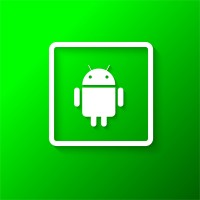
- Flutter AppBar
- Flutter Container widget
- Flutter Text widget
- RichText Flutter
- Row in Flutter
- Column in Flutter
- ListView in Flutter
- GridView in Flutter
- Stack in Flutter
- Expanded in Flutter
- SizedBox in Flutter
- Padding in Flutter
- Center in Flutter
- Align in Flutter
- FractionallySizedBox in Flutter
- AspectRatio in Flutter
- Baseline in Flutter
- TextField in Flutter
- Checkbox in Flutter
- Radio in Flutter
- Switch in Flutter
- Slider in Flutter
- DropdownButton in Flutter
- CupertinoPicker in Flutter
- ElevatedButton in Flutter
- TextButton in Flutter
- IconButton in Flutter
- GestureDetector in Flutter
- InkWell in Flutter
- PopupMenuButton in Flutter
- Image in Flutter
Align in Flutter
18-Sep-2024Learn how to control the alignment of widgets using the Align widget in Flutter
The Align widget, like the Center widget, is used to align child elements within the available space.
However, unlike Center, Align gives you more control over the position of child widgets, allowing you to set different alignments within the parent widget.
There Are Some Common Attributes for Align
| Alignment.topLeft | You can set widget in Top Left |
| Alignment.topCenter | You can set widget in Top Center |
| Alignment.topRight | You can set widget in Top Right |
| Alignment.centerLeft | You can set widget in Center Left |
| Alignment.centerRight | You can set widget in Center Right |
| Alignment.center | You can set widget in Center |
| Alignment.bottomLeft | You can set widget in Bottom Left |
| Alignment.bottomCenter | You can set widget in Bottom Center |
| Alignment.bottomRight | You can set widget in Bottom Right |
Here's a simple example of using a Column in Flutter:
File open lib->main.dart file −
import 'package:flutter/material.dart';
void main() {
runApp(
MaterialApp(
home: Scaffold(
appBar: AppBar(
backgroundColor: Colors.blue,
title: Text('Align Example',
style:TextStyle(fontSize: 20,color: Colors.white)),
),
body: MyApp(),
),
)
);
}
class MyApp extends StatelessWidget {
@override
Widget build(BuildContext context) {
return
Align(
//alignment: Alignment(0.5,-0.5),
alignment: Alignment.topRight,
child:
Text("Micro Tutorial",
style:TextStyle(fontSize: 20,color: Colors.red),
)
);
}
}
Open
Device Manager, run the emulator, and then run the application. Next,
check the working output and check the output you declared in your
code.



